The two images shown are of the same event yet set far apart by time. One is a simple photograph of a degree, posted to Twitter with the hashtag #graduated and #CMUgraduate56th, the other, photographs published in a faded old local newspaper. Time and technology featuring the great pride of a young graduate may set these images apart, but the two images have more in common than initially suggested.
In 1953, the Khon Muang newspaper had a column called ‘Ok Khuang’, which in Northern Thai means to sit on one’s front porch, conducting various activities and chatting with one another. It was a daily occurrence for families across the North of Thailand and a suitable name for a column which invited the public to participate and offer their opinions on a variety of topics raised. Today, we have social media.
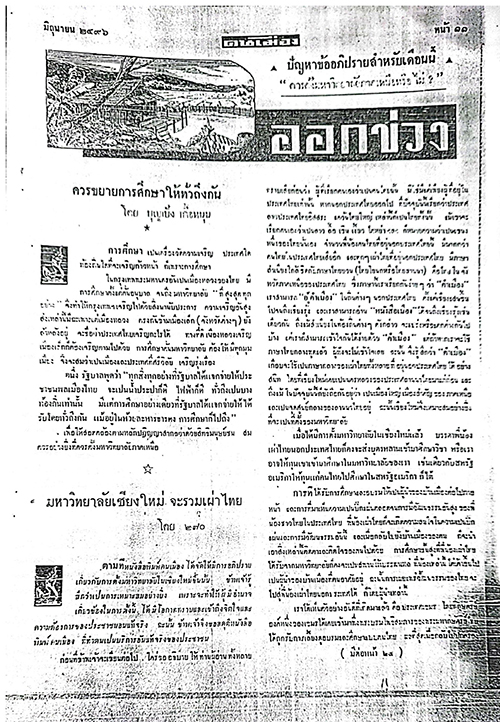
In 1953 one of the most popular topics of discussion was whether there should be a university in Northern Thailand, especially Chiang Mai. The public were becoming more insistent that the government build a university to meet the educational needs of the people of the North. Conversation, in fact, began three years prior, in 1950, by Thongdee Issarachiwin, a Chiang Mai member of parliament who had first raised the question with the government in Bangkok. There was follow up in the Chao Nuea Newspaper, but in spite of much support from the public, there was no headway. It was not until 1953 when Khon Newspaper’s editor Sangad Bunjongsin began to focus on this issue, generating vast public support.
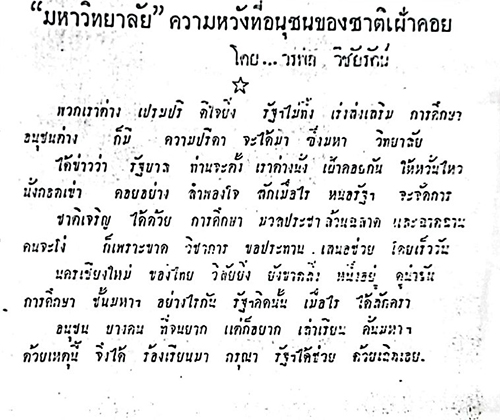
Since the reign of King Rama V, education had been a national policy and Chiang Mai, along with other regional provinces, saw a rise in a great number of both private and public schools, many of high quality and which are still renowned today. However, once graduated from school, students in the North had no opportunity for further education unless they had the means to move to Bangkok to study at the already well established universities there – Chulalongkorn University, Thammasat University, Kasetsart University, Mahidol University and Silpakorn University. Voices grew as the people of Chiang Mai began to demand a better future for their children, in hopes of more opportunities and eventually the overall development of Chiang Mai and the North as a whole.
Khon Muang Newspaper continued its campaign for a university, using its media power to spotlight the issue and motivate support amongst its readers. Khon Muang printed cards with the words, ‘We want a university in the North’ and a maroon stamp with the words, ‘We want a university in Lanna Thai’, encouraging its readers to send at least three such cards on to their friends – an old fashioned chain mail which worked remarkably well. Soon, people across the North were sending cards to one another and students, rickshaw drivers, and various locations proudly attached the cards to their bags, vehicles and workplaces.

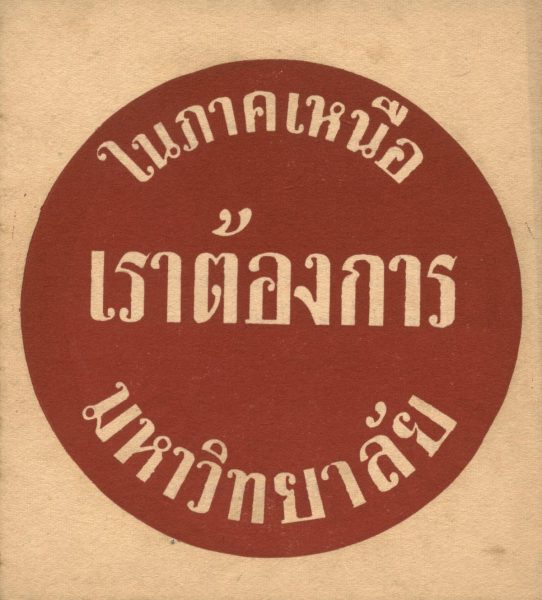

As the chorus demanding a university grew, in 1959 M.L. Pin Malakul, the Minister of Education at the time, wrote;
“As to the matter of setting up a university in Region 8, in accordance with public wishes, the meeting agrees to set up Chiang Mai University…due to it being a real need of the people.”
M.L. Pin Malakul visiting Chiang Mai to survey the possibility of a university
(photograph by Boonserm Satrabhaya)
These words reflect the voices of the public in Northern Thailand, each of which added to one another to create a cacophonous which couldn’t be ignored and was the power that propelled the decision to build Chiang Mai University. Soon there were surveys to find locations on which to build, and work being done to ready personnel and syllabi in preparation of officially opening the university in 1964. On the 2nd October 1962 Prime Minister Field Marshall Sarit Thanarat came to Chiang Mai to officially lay the foundation stone for the university building, telling those present;
“I would like to request all of those responsible as well as our brothers and sisters who are citizens of the North to please be interested, support, care for and help to work towards the success of the university. Do not ever forget that universities are national treasures which would be a tragedy to allow to deteriorate.”
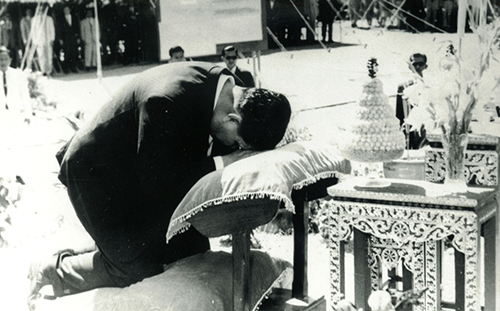
Prime Minister Field Marshall Sarit Thanarat laying the foundation stone for the university building
One of the main missions of any university is to produce graduates who can go on to add to the strength of the nation. “There is nothing sadder than producing graduates who have nowhere to work because there is no demand,” said M.L. Pin Malakul. Therefore, prior to the official matriculation of the first students, in 1961 and 1962 there was a region-wide survey across the North of Thailand asking students, parents as well as educational departments and offices, as to what they wished to see students study at Chiang Mai University. It soon emerged that literature was a subject in most demand, followed by medicine, agriculture and science. At the same time a similar survey was conducted amongst the business communities of region 8, one that revealed that there was the most interest in hiring graduates in commerce and accounting, followed by education, agriculture and medicine.
Once it was clear what the marketplace as well as student needs were, as well as studying the financial abilities of the public, in 1964 the university opened, offering degrees in three faculties – humanities (which included literature), sciences (which included the sciences, pre medicine, as well as agricultural science), as well as social sciences (which included economics, commerce and accounting). The first two faculties met the initial needs of the students, while the third faculty met the needs of the market. Soon, by 1965, the then Faculty of Medicine at Mahanakorn Hospital Medical Science University was folded into Chiang Mai University as its Faculty of Medicine with the attached Mahanakorn Hospital, making for the fourth faculty.
Group photograph of faculty and students on the first day of matriculation, 18th June 1964
There was such pride upon the first graduating class, the entire city celebrated their success as though they were their own children. The students received their degrees from HM the King in 1966, realising the dream of so many who had written in and shown their support to the Khon Muang newspaper campaign.
First year students, 1970
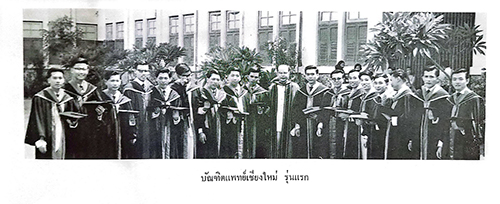
The first graduating class were all from the Faculty of Medicine
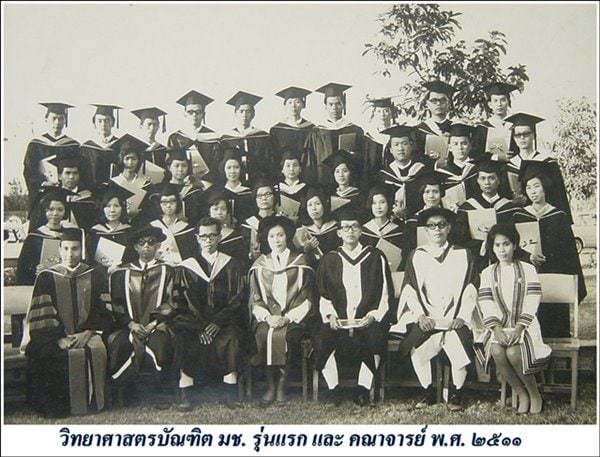
Pioneering graduates of class ’07 receiving their degrees from HM the King in 1968
As we see the familiar blue bird of Twitter being used to communicate news of graduation, we must remember the power of the traditional media of yore. Khon Muang newspaper used one column to generate such public support that a university was founded. Today Chiang Mai people may communicate mainly online, but the ‘Ok Khuang’ tradition of chatting and action holds strong.